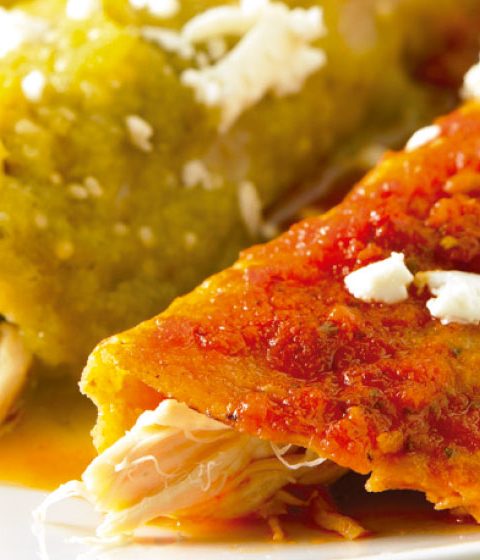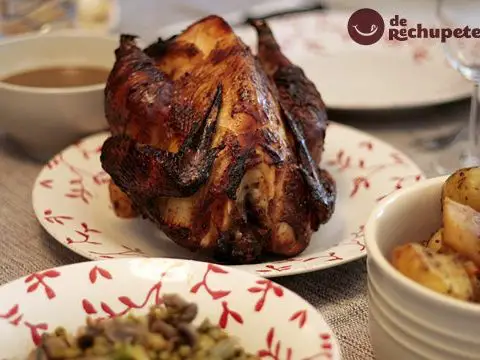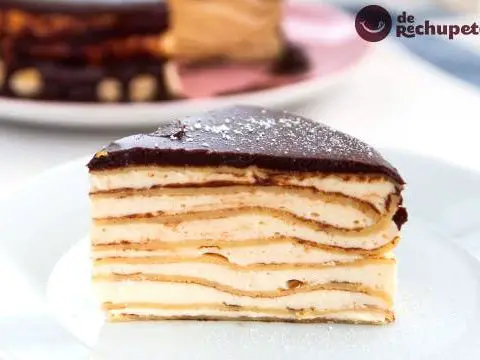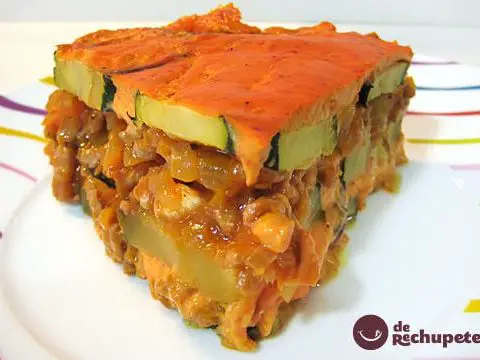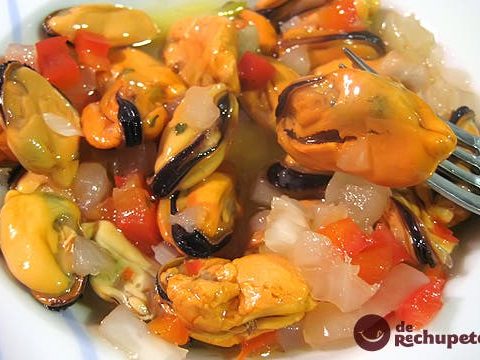
Info.
- Easy
- 30 minutes
- For 8 people
- € 0.3 / person
- 302kcal per 100g.
How to make Carnival ears, stars or flakes .
We continue with Don Carnal dessert recipes and today I present another of the most famous and simple Carnival recipes .
These crispy, deep-fried dough portions, coated with a thin layer of powdered sugar, look irresistible and delight everyone at home.
Its shape is usually similar to the pig’s ears, although in this case the ones you see have a rectangular handkerchief shape. Although you have some other option on the blog, like these friar ears .
.instagram-follow img{width:100%;height:auto;} @media screen and (min-width: 1000px) {.instagram-follow {display:block;clear:both;float:right;width:50%;margin-left:1em;}}
It is usually the usual dessert along with some creamy crunchy pancakes after a good Galician stew at all the carnivals. In “La Cocina Gallega” reference book in this house, Alvaro Cunqueiro told us: “lardeiro for Sunday, besides the pancakes , are flowers and orellas with dough, eggs” .
In my town in Ourense where my parents are registered, they celebrate Carnival by tasting a meal all together for these dates with Galician empanadas, sausage of slaughter and Galician stew as the main dish.
Finishing off with typical desserts of these dates, all watered by good wines from the Ribeira Sacra and homemade coffee liquor , which my father Suso does so well.
I leave you with some of the best dessert recipes on the blog and to see if I hit you ” o antollo de orellas “, remember that freshly made is how they are richest. By the way, what is your favorite carnival dessert?
Preparation of the dough for the Carnival ears
- We wash the fruit that we have chosen to flavor our ears: lemon, orange or tangerine.
- I love it with orange, but here it goes for tastes. Grate the orange and reserve.
- In a large bowl add the warm water, a pinch of salt, the previously melted butter, the zest of an orange, the sugar, the anise and the eggs.
- We beat until we have a cream without lumps. Next we are adding the wheat flour little by little, mixing first with rods and then with the hand.
- We knead until we have a manageable fat mass. It is very smooth to work with and a moist appearance similar to the mass of the pestiños.
- In this case the secret of the dough, they all have one, it is rest. Leaving it for one hour is enough, but if you leave it in the fridge for two or three hours. Remember that if you have left over you can freeze it.
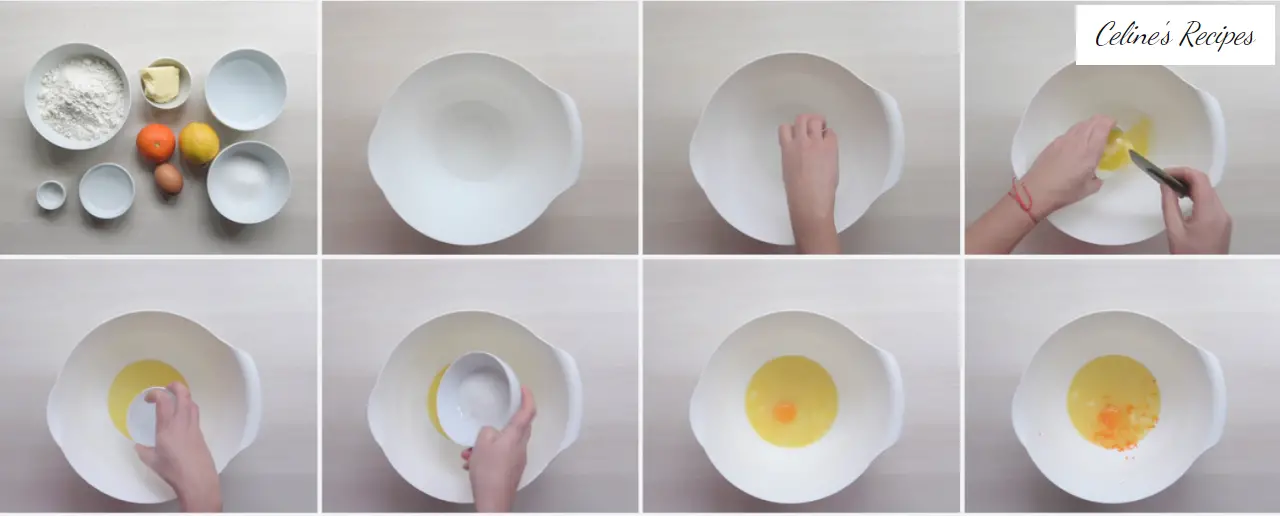
Carnival ears stretched and shaped
- The next step is the stretching of the dough, we take two-centimeter portions, the size of a walnut. We crush a little and stretch on the kitchen counter with the help of the roller or a bottle.
- A small trick is to smear the roller with olive oil to make it easier to stretch but we should not use flour even if it sticks. If it happens, we can spread the work area with a little olive oil.
- The handkerchiefs should be super thin, like paper, as much as possible. This step is very important because thick ears are not going to like it.
- What we are going to achieve is to eat fried toasts, remember: very thin . With these measures it gives for about 20 scarves of 18 cm x 12 cm or so.
- Now is the time to shape it if we want. With the fingers we make a fold on one side giving it the desired shape, in this case of ear, handkerchief or sheets.

Frying the Carnival ears
- We put a frying pan with plenty of extra virgin olive oil and heat over medium-low heat.
- We add a piece of dough to the pan and when it is browned is when we must start frying.
- I have used mild extra virgin olive oil but for those who do not like the strong flavor it gives you can use sunflower oil.
- The ears of this recipe are like my mother does but if you want them to be shaped like an ear, you just have to give it with a fork and push from one edge of the dough to the center to make the shape of an ear. It is a few seconds while the dough hardens a little so that it is crispy.
- We fry the ears on both sides until golden. Better fry in a deep fryer or in a saucepan or wide frying pan with enough oil so that they are submerged.
- This process is very fast and we must control that the oil does not burn us. To get the ears crisp and slightly hollow, we need the exact temperature of the oil, between 175 and 180º C. This makes it very easy to control frying.
- We remove to a plate with absorbent kitchen paper to remove the excess oil.

Final presentation of the carnival ears
- We only have to sprinkle with icing sugar to taste. Or as I like with a little icing sugar mixed with cinnamon powder. Letting it be well impregnated with sugar and cinnamon.
- Let cool and taste fresh, at room temperature or cold. Simply delicious.
This traditional dessert is perfect for these fun dates. Do not miss the step by step of these Carnival ears in the next album.
Tips and advice for perfect Carnival ears
- Final recommendations on the dough: In the province of Ourense they are usually prepared with white brandy but I like them more with anise, I leave it to your choice.
- In the blog reference book ” Galician Cuisine by Álvaro Cunqueiro ” they substitute water for milk. Thus, the ears are creamier and add cinnamon in the kneading process.
- Regarding butter you can also change it for butter (as in this case), olive oil or margarine.
- To make them thin, crispy, hollow and crispy, it is not necessary to add yeast. I never add it so I don’t know how it will stay with it.
- If we want to shape it while we fry, we help ourselves with a fork and in the middle of the dough we shape the ear.
- In some areas of Ourense it is typical to bathe them with a good flower honey. Although they are very rich, they remind me more of pestiños than orellas. But for you larpeiros I leave you the touch of honey that you will surely like.
- Eva Cayetano tells me a good trick: “My mother, always, when she makes carnival ears, fries some anise seeds in oil, very little. And this was added to the dough, a softer flavor remains. Ah, this same oil was where I fried the orange peel ”
I leave you the ear recipe from ” The Practical Picadillo Cuisine ” so that you can see that since 1907 the preparation has hardly changed. He does not put ingredients in the book. Something that doesn’t help at all, but serves as documentation for some recipes that I can’t find anywhere else.
“Dough is prepared with flour, eggs and milk. It is left covered in a warm place for two or three hours, gramming it a lot once it has fermented. We spread in a layer as thin as possible and cut into rectangular pieces, frying them in cow butter and dusting them with sugar. ” Hash
